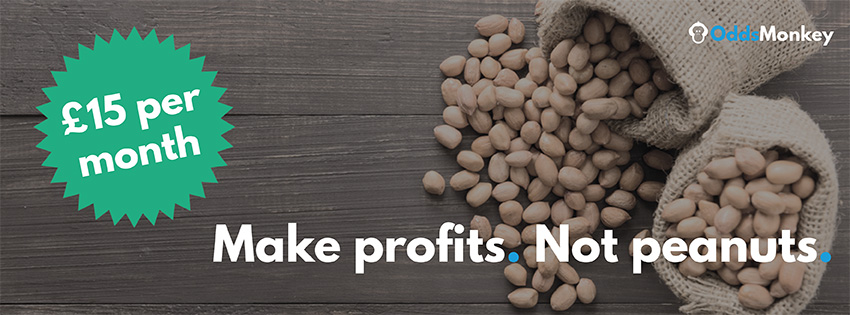John Isner: The Man to Stop Nadal at Roland Garros?

Another clay season is here, which means that in a little over a month, most of the tennis world — if not the entire tennis world — expects to see Rafael Nadal hoisting the winner’s trophy at Roland Garros for an 11th time.
Given his form in both the clay court and Davis Cup matches he played, Nadal looks as dominant as he’s ever been. In his Davis Cup and Monte Carlo matches, he has won every set he has played. And not only that, but in every set he has played, the opponent has failed to win five games. And let’s not pretend Nadal’s opponents have even been getting to four games in a set on a regular basis. Nadal played ten sets in Monte Carlo, and only once – in the first set against Grigor Dimitrov in the Monte Carlo Semifinals — has his opponent won four games.
Nadal on Clay: An Impossible Task?
In Nadal’s career, only two players have beaten the Spaniard at the French Open. In probably the biggest shocker in tennis history, Robin Soderling beat Rafa in four sets at the French Open in the 2009 Round of 16. And then, in 2015, Djokovic beat Nadal in straight sets in the Quarterfinals. But, Soderling is out of the game, and it’s unrealistic to believe that Djokovic, who has been injured for a lot of the previous year, could go onto Nadal’s turf and beat the 10-time Roland Garros champion in a best-of-five match.
So, this leads me to my theory: namely, that a baseliner and/or a clay courter cannot beat Rafa at the French Open this year. For instance, Nishikori and Thiem are all talented baseliners with awesome groundstrokes, and can put all kinds of pressure on opponents. Nishikori was up huge on Nadal in Madrid before leaving with injury — so while he might have the game to beat Nadal on clay, not only does his game have to be peaking, but Nadal’s game must be extremely mediocre. What’s more, he also has to navigate the best-of-five format. When Nishikori has played Nadal best-of-five, he has lost every set he has played, going 0-9 in sets in the three major meetings, which includes Nishikori winning eight games in three sets at the 2013 French Open.
Thiem beat Rafa in best-of-three at Rome last year, so he can beat Nadal on clay. But look what happened not only this year in Monte Carlo, when Rafa was not fatigued as he surely must have been in Rome this year, but also last year in his matchup with Nadal in the French Open Semifinals. In three sets, Thiem managed to win seven games, and the match included a 6-0 third set win for Nadal. These baseliners can give Nadal a fight, and possibly even beat him, in best-of-three, but playing on Nadal’s turf in best-of-five is tough.
David Ferrer, a Roland Garros finalist and one of the best clay courters of this generation, has won one set in four matches against Nadal at the French Open. Even Roger Federer, who has won a record 20 majors, won only four sets in five matches at the French Open against Nadal.
Serve Big and Come to the Net
So, my theory is that in order to beat Nadal at Roland Garros, a player needs to do a few things, each of which is far easier said than done. First, a player must have a huge serve. As Nishikori learned yesterday against Nadal, being without a big serve to win a bunch of free points against Nadal on clay will just lead to a series of brutal baseline rallies that will leave the player exhausted.
The player must not allow Nadal to establish a rhythm from the baseline. I think a big server with an aggressive baseline game has an advantage in this area too. Rallying with Nadal a lot gives him the rhythm he needs to feel comfortable and work the player around the court, so a player must absolutely crush any ball that is less short, as Thiem did in Rome last year and Soderling did at Roland Garros. Otherwise, Nadal create a rhythm for himself — and once he has that rhythm, then he is nearly impossible to beat because of the high margins he creates for himself through his groundstrokes. This means that it is okay to go huge and miss groundstrokes. Even if a player misses some groundstrokes, it’s still creating the start-and-stop culture of the match needed to allow a player to beat Rafa.
Thus, players must have a big serve allowing them to win, and he must not allow Rafa to establish a baseline rhythm. Part of the deal with this lack of baseline rhythm and big serving is for a player to come to the net as much as he can. This, again, will force Nadal hit passing shots, and this, along with the big serving and groundstroke shots, will make Rafa feel uncomfortable. And therein lies the key: Make Nadal uncomfortable and play your game, instead of playing his game. Of course, though, missing every groundstroke is also a losing strategy, so the player has to at least sometimes make these high-risk groundstrokes.
Throughout the parts of Nadal’s Monte Carlo matches that I watched, opponents were glued to the baseline playing Nadal’s game. But by coming to the net, hitting monster serves, and emphasizing short rallies, the right player can make Nadal extremely uncomfortable. This would be similar to what Mischa Zverev did to Andy Murray at the Australian Open in 2017. Murray wasn’t able to play his game, and he ultimately lost in a shocker.
Clearly, though, belief is key. Having beaten – or having come close to beating — Nadal on clay before will ultimately be necessary to beat Nadal at Roland Garros. This type of belief is partially why Djokovic bested Nadal in the 2015 French Open. On a smaller scale, on of the main reasons why Thiem beat Nadal in Rome last year was because he played Rafa so tight in the first set last year’s Madrid Final. Thiem finally knew that he could beat Nadal on clay.
Only Isner has the Necessary Traits
So, then, who has all of these traits? One guy, more than any other, comes to mind: John Isner. Yes, he isn’t someone who immediately comes to mind when you think of a clay courter who can challenge Nadal, but if there is going to be someone who can beat Nadal, it’s either Isner, or someone who plays very similar to Isner. But, I think it’s Isner who can beat Nadal for a few reasons, all which are demonstrated in Isner’s five-set loss to Nadal in the 2011 French Open First Round. And while Isner did lose in five sets, he was two points away from 5-5 in the fifth, where anything would have been possible.
In that match, Isner came to the net as often as possible. This took away Nadal’s rhythm and forced him to hit passing shots. Given the power of the balls coming to him, and the reach of Isner, this made life extremely difficult for Rafa.
The serving from John is absolutely huge. As mentioned before, something we saw in Monte Carlo last week is that opponents often got off to terrible starts against Nadal. By having a big serve like John’s, it allowed him to stay in sets and hope the pressure got to Nadal. Both sets that went to tiebreakers in that match were won by Isner. If Nadal’s opponent can use their huge serve to keep the player in a set, both when on serve and when down one break, then potentially Nadal will falter and that player can take advantage, in this case Isner.
This was even true in the fifth set, when Isner used his power game to just stick around the set, and had an opportunity at *5-4 to potentially break back when at 30-30. Sure, Nadal was getting a lot of Isner’s serves back, but when he did, often, John was in a great position in the point.
John’s groundstrokes need to be on-point, as they were in that match, and as they were in Miami, where he recently won his first Masters 1000 title over Alexander Zverev in the Final. John’s groundstrokes were at a very high level throughout that tournament, and when his game is working like it was in Miami, he is extremely difficult to beat. John’s ground game can be lifted to a higher level than other big servers, such as Ivo Karlovic, which is why I think Isner has a much better shot than Karlovic to beat Nadal at the French Open: John’s groundstrokes just have a higher ceiling than Karlovic’s groundstrokes.
Of course, none of this is to say that Isner will assuredly beat Rafa should they matchup this year at the French Open. After all, Isner did lose to Stevie Johnson in a third set tiebreaker in Houston last week in his second match, and Nadal is 7-0 against Isner, including a 3-0 record on clay. But, in two of three of John’s matches with Rafa on clay, they did go the distance, including a three setter in Monte Carlo which included Nadal winning a very close first set tiebreaker. And Isner did reach the Semifinals of Rome last year, a tournament who’s conditions are much like the French Open.
What this means is that we shouldn’t be too quick to dismiss John Isner’s chances. Moreover, we shouldn’t fall into the belief that the players who can beat Nadal have to be spectacular for years. All it takes is one match for a player like Isner to record an upset that rivals Nadal’s loss to Robin Soderling. For these reasons, John Isner is the biggest threat to beat Rafael Nadal at the French Open.
This article was originally published here at All About Tennis. For more from David, follow him here.













